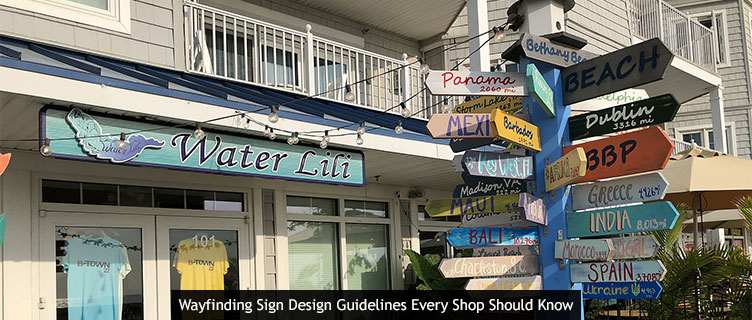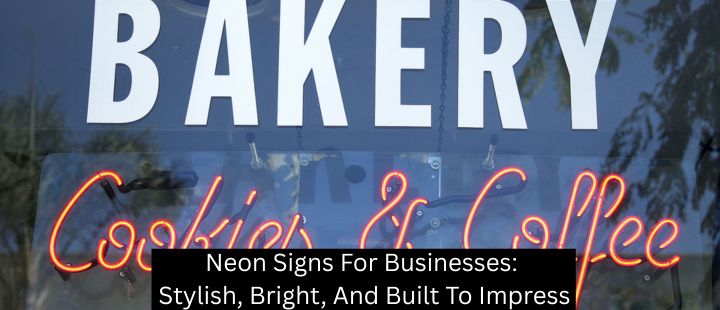Today’s post reviews some essential wayfinding sign design principles that every sign shop should know. Read on to see how your sign design skills stack up!
Wayfinding Sign Fundamentals
There are four general types of wayfinding signs:
- Identification/Confirmation Signs tell readers whether or not they’re in the right place, and point out specific landmarks, structures, amenities, or rooms. Importantly, identification/confirmation signs do not provide directions–think of them instead as “you are here” designations.A business owner might use identification/confirmation signs to identify breakrooms, conference rooms, restrooms, reception areas, and other common destinations. They commonly mark exits and entrances.These signs are meant to be “short and sweet,” so that readers can identify or confirm their location at a glance.
- Directional Signs usually come to mind when people think of wayfinding signage. These are the signs that move people towards their final destinations. They appear most often at junctions and anywhere else the guest needs to make a decision about which way to go.Directional signs are typically used at entrances and elevator lobbies to help visitors locate the reception area, loading dock, conference room, and other common destinations.
- Informational Signs give the reader useful information about their route, destination, or current location. These signs do not provide directions, though they may assist with identification/confirmation.For example, informational signs may be used on highways to alert drivers of slippery conditions or sharp turns. In this case, both signs give the driver information they can use to avoid hazards, though many informational signs are more about enriching the reader’s experience and alerting them of amenities. Informational signs in office may inform visitors of free WiFi, or provide some historical information about the area.
- Regulatory Signs inform readers of any regulations or safety codes currently in effect. “No Parking” signs, posted speed limits, and “No Smoking” signs are some of the most recognizable regulatory sign types.
5 Essential Wayfinding Sign Design Guidelines
The following wayfinding sign design principles should be tacit.
If your shop isn’t adhering to these guidelines, you’ve undoubtedly got some serious room for improvement!
But don’t worry–a quick review of these sign design best practices will bring your business up to speed:
- Treat everybody like a first-time visitor. As a general rule, “regulars” and first-time visitors should have an equally easy time navigating your facility.
- Walk a mile in the customer’s shoes. Always take the time to walk through your space as though you were a customer. This will help you spot any missing information and poor sign placement. It can also help to bring a friend or family member who isn’t familiar with your building.
- Supplement all “decision points.” These are the junctions where significant decisions about the route are made–think staircases, crossroads, elevators, and entrances. Your signage system should include at least one wayfinding component per decision point, preferably more.
- Include travel time or distance. Telling readers how long or far they need to travel will be before reaching the next checkpoint will greatly improve your wayfinding outcomes.
- Keep it simple, stupid (KISS). Brevity is a virtue in the signage world. Design every wayfinding sign to be taken in at a glance. You may be tempted to fill up the entire substrate, but remember: clarity and clutter don’t mix. Edit ruthlessly and opt for symbols or pictograms whenever possible.
Contact Signworld’s Wayfinding Design Experts
If you want to learn more about the art and science of wayfinding sign design, visit https://signworld.org to find a Signworld business partner near you.




